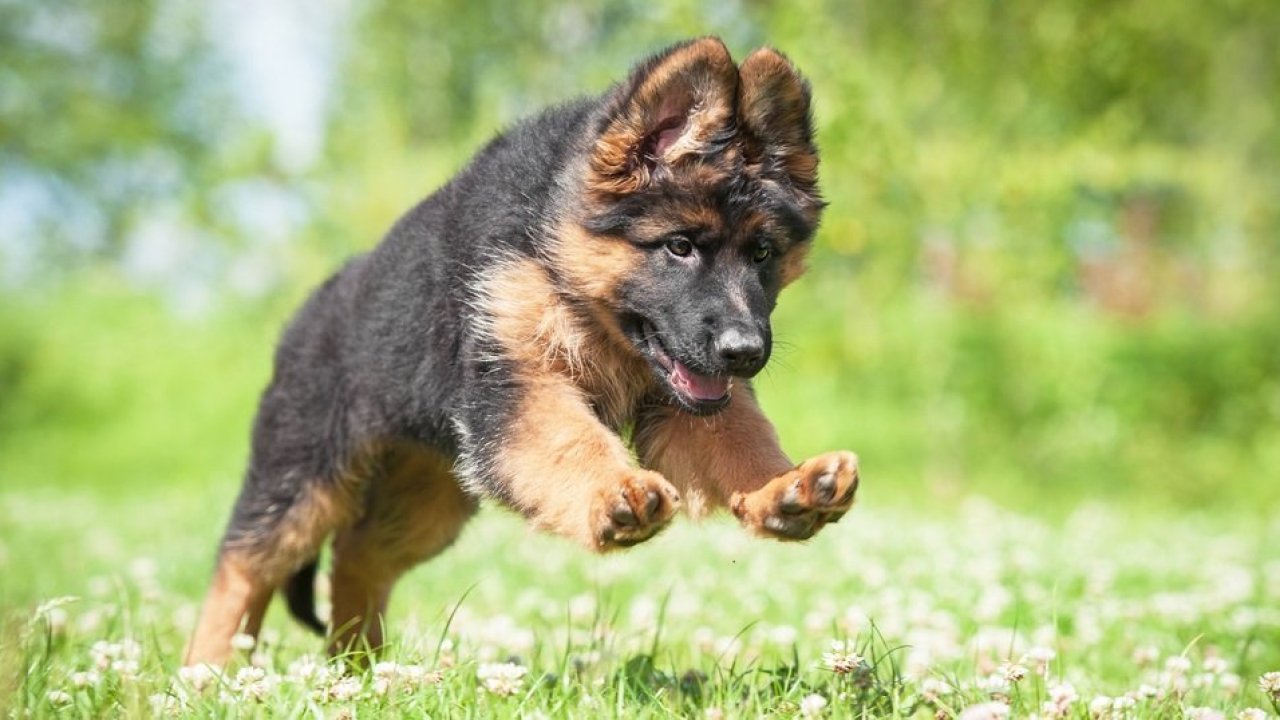If you have a female German shepherd, you should know all the heat cycles that your pet goes through. Find out when this type of dog’s first heat is and how often they enter this cycle. Know the average time your German Shepherd will be in the heat to protect him from other dogs.
Discover how you can tell if a German Shepherd is in heat by some attitudes that the dog takes. Know the ways to care for a female German Shepherd when it is in the heat cycle.
When Are German Shepherds’ First Heat?
Contents
When you have a female German Shepherd as a pet, you will accompany her throughout her life cycles. You must be careful with your pet’s 6 or 9 months of life because this is the average time for his first heat. The female GSD may be in the heat much earlier, depending on how fast she develops in her puppy stage.
Miniature female GSDs are the ones that can stay in heat the fastest because their development is very fast. Before the year, you can have many GSD puppies if you do not take care of your pet from other dogs. The female German Shepherd can get pregnant from the first heat, so you must take care of her.
Your pet can be very anxious and sometimes aggressive in the first heat until the end of the stage. You should understand your female GSD and wait for the heat to end after about one month.
How Often Does A German Shepherd Go Into Heat?
Your female German Shepherd can come into heat every two times a year or sometimes every seven months. You must keep a timeline of the time your dog entered and left the heat and calculate from there. It is very good that you take your pet’s offspring to have new companions in your life to accompany your female GSD.
Small breeds of GSD can increase their heat frequency every four months with a better chance of having young. You should know very well the different stages of heat between an American GSD and a common one in your household. Both dogs are incredible, although their size and development are very different if you plan to raise pups.
If you notice that your female GSD has very distant heat stages, you need to see a veterinarian. The lifestyle and diet that your GSD may have may be interfering with its heat cycles. You should consult with experts on these pets to keep track of their development and heat stages.
How Long Has A German Shepherd Been In The Heat?
When you know that your German Shepherd is in heat now, you must know the duration of this entire cycle in the pet. On average, your female GSD will last four weeks in heat, ready to reproduce and have the babies. If you have no plans to give your pet to breed, you have to take care of it in all this feverish time.
It is very good that you keep track of the days when your female GSD is in heat and when not to protect him. You can be guided by some changes in attitude that the dog has throughout the hot cycle. The rutting time in the GSD is the same for all breeds, although it can be shortened on some occasions.
As your female GSD grows, her time in heat may decrease to approximately three weeks. In some irregular cases, the GSD may lose heat much earlier, long before it is up, but this is common. If you see other irregularities in your pet in its heat cycle, you can go to a veterinarian in your city.
How To Know If A German Shepherd Is In The Heat?
Some interesting points that you may notice about your female GSD when he is in heat are:
-
Attraction stage
When your female GSD is in heat in the first days, all dogs will be attracted to her looking to reproduce. This stage of attraction in German Shepherds is called proestrus and is almost inevitable due to the canine’s smell. On many occasions, the female GSD rejects the male until he finally bleeds and is open to reproduce.
-
Succession stage
After about ten days have passed in the attraction stage, the female GSD will be a little more susceptible to reproduce. This new stage in GSD heat is known as estrus, and it can last 20 days. You can easily notice this stage in your pet when she rubs her body to any area because she is ready to mate.
-
Pregnancy stage
In case the fertilization between dogs is effective, you will notice how your pet will get pregnant in a short time. This stage usually lasts ten days, and you can see it by the extra lump that your female GSD has.
-
Rest stage between cycles
If your pet has passed the heat stages and did not result in pregnancy, then the cycle will repeat approximately six months. By next time you will already know how your female German Shepherd behaves in her heat cycle.
How To Care For A GSD Woman In Heat?
How you can care for your GSD woman in heat can be:
-
Keep your pet at home.
If you don’t want your female GSD to get pregnant, it is still ideal for keeping her indoors until the end of the cycle. You have to leave your pet for at least 20 days until the heat cycle dissipates. It is very good that you feed your German Shepherd with a lot of food to lower his heat intensity.
-
Keep dogs away from the GSD.
You have to avoid at all costs that the other dogs come near your GSD to avoid mating. Ten days after your pet goes into heat is the mating stage where it can result in her puppies. You can avoid going out on those days when your German Shepherd is in the heat so that other dogs will not come near her.
-
Understand your pet in its cycle
Your female GSD may get restless in her heat cycle, so you should try to understand her until she passes. You can play with your pet, run or do other activities on your property that do not expose them to other dogs. It is very good that you exhaust all the energy of your German Shepherd in 20 days of heat.
-
Sterilize your pet
You can get some help with your pet by doing a sterilization method that doesn’t allow it to reproduce. These methods are very effective if you contact a professional doctor who will give you real results on your dog. You can get rid of that headache where you feel like your GSD will get pregnant at any moment.
You must do your best for your pet and be with her in her heat cycles that occur regularly. It is great that you do a little research on all the methods to get your female GSD into heat.




